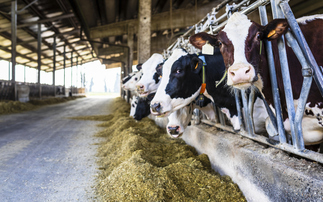A timeline from coal to negative emissions at Drax – told by the engineers who were there
Biomass power generation would have seemed impossible to the engineers who began building Drax Power Station in 1967. Today, however, sustainably-sourced compressed wood pellets have enabled the Yorkshire power station - once the country's largest single source of emissions - to rapidly decarbonise, with carbon dioxide (CO2) emissions 85 per cent lower than in 2013.
But the unique nature of Drax presents a more powerful opportunity for its future: negative emissions.
Through bioenergy with carbon capture and storage (BECCS), Drax aims to not just be carbon neutral, but carbon negative by 2030 and, in the process, act as an anchor in the country's largest industrial decarbonisation cluster. Securing a green economy in the UK, opening up new career paths and leading the country to net zero emissions by 2050.
This is the story of how the UK's biggest coal power station transformed itself through ingenuity and innovation into a decarbonisation powerhouse.
"You have to take your hat off to the team involved in designing and building the biomass systems," says Carl Clayton, head of BECCS at Drax. "When you look back at the journey Drax has gone on."
Drax before biomass and the origin of the idea
When Drax Power Station officially opened in 1975, with three generators, each capable of powering a whole northern city, the UK's energy system looked very different from today. Coal was king, but just the year before, the miners' strike - combined with the oil crisis - had forced the Heath government to implement three-day working weeks in a desperate bid to reduce electricity consumption. Drax's capability to power some three million homes represented a new era of plentiful energy across the country.
By the dawn of the 21st century the power station had doubled in size and capacity to become the biggest in the UK and house six generator units. The energy sector, however was beginning to change. It was becoming increasingly apparent the UK and the world needed to move away from coal and fossil fuels, yet continue to meet a growing demand for electricity.
Drax had already made strides towards reducing pollution from electricity generation and in the 1980s and 90s was the first coal-fired power station to install flue-gas desulphurisation technology, which removes 90 per cent of coal's harmful sulphur dioxide (SO2) emissions - the cause of acid rain. But moving away from coal entirely was a whole new question.
"We made a lot of people's heads hurt with this project," says Drax chief innovation officer Jason Shipstone. "No one had the answers. It was a bit like going for a walk, knowing where you need to end up, but not knowing the best way to get there."
A new fuel for a low carbon power station
Experimentation into alternative fuels became a focus for the research and development team. Initially, they combined materials such as wood powder and sunflower husks with coal at low percentages to understand if they could be used without detrimental effects on the boilers.
Eventually, compressed wood biomass pellets sourced from sustainably managed working forests were settled on as the best possible, renewable fuel source. But biomass is a very different material than a lump of coal. It's a more volatile substance, it must be kept dry while being transported and stored, as well as handled in a safe way to prevent it combusting.
This meant innovations were needed throughout the supply chain. Covered train wagons were specially designed to transport the fuel and the four giant biomass storage domes, capable of holding 300,000 tonnes of pellets between them, were constructed at Drax Power Station.
Even as experimentation and construction progressed the power station continued to operate. "Everything else had to carry on as normal. This had to be seamless. We had to work the same as Drax has always worked - reliable and available," says Shipstone.
In 2009, Drax engineers overcame the final challenge to successfully run a 600-plus megawatt (MW) Drax generator from a co-fired boiler, kickstarting a decade of major transformation, innovation and, ultimately decarbonisation. The conversion of the a first generating unit to run entirely on biomass alone to produce low carbon, renewable electricity in 2013 represented a further landmark moment for Drax.
"When I joined Drax in 2013, there were still some colleagues who were less keen on the transition away from coal," says Clayton. "Looking back on that now - it seems crazy to question it. If we hadn't, the power station could have closed down like others in the area."
In just five years, Drax converted three more generating units to run on biomass. With each conversion also came greater knowledge of working with biomass and what it was capable of. Building on this knowledge and previous experience of carbon capture research and development, 2018 saw Drax Power Station begin a new era. One that could have an even farther reaching impact on the UK's decarbonisation.
From biomass to negative emissions
The skills, experience and understanding of biomass developed at Drax have made it a world leader in bioenergy - from sustainable forest management through to the power it can produce. However, by adding carbon capture to the equation Drax can pioneer BECCS technology and have an impact across the Humber industrial cluster - currently the UK's highest emitting region - and beyond.
"Now we have a very novel opportunity to do something the world is saying it needs and to demonstrate how it can be done elsewhere," says Clayton.
BECCS and negative emissions starts by using sustainably sourced biomass. The forests used to supply biomass absorb CO2from the atmosphere. When the biomass is used to generate electricity, the same CO2 re-enters the atmosphere. By adding carbon capture, that CO2 can be transported and stored, permanently and safely, in rock formations, deep underground. It means CO2 will be removed from the atmosphere permanently, whilst reliable, renewable electricity is generated.
The idea sounds ambitious, but carbon capture usage and storage (CCUS) is already a proven technology, deployed at scale at fossil fuelled power stations around the world. And once again, it's a field in which Drax has experience to build upon.
The White Rose Project was a plan to capture CO2at new coal-fired power station on Drax's site near Selby and transport it to storage sites in the North Sea. It was stopped when the government cut short its CCS commercialisation programme in 2015.
The political climate around decarbonsiation has shifted since then, with the UK now legally bound to achieving net zero emission in 2050. White Rose offers a platform from which BECCS can launch, with research into pipework of different materials, transporting CO2 at different pressures and engineering for infrastructure installations, as well as research into geology already completed.
"There's no reason it couldn't be done. There's nothing you can't engineer," says Clayton. "Transporting CO2 to the coast and taking it out to North Sea storage beds and sequestering it: all of the work pre-exists. Drax and the Humber have a good starting point in understanding the full chain of BECCS."
Beyond transporting CO2 from Drax's biomass generators to storage locations, the infrastructure put in place can also capture emissions from other facilities in the Humber industrial cluster. This shared infrastructure can create a zero carbon ecosystem that future-proofs industry in the region, creating new jobs and leading the UK into a green recovery.
Its reach is not limited to the UK though, "We're trying to ensure that our learnings in both biomass and CCUS will be transferable and we can help the world's economies create their own negative emissions, technologies and projects," says Clayton. "We can make sure that sustainability is at the top of the agenda as the world generates energy and deploys its resources in the future."
This is a contributed article from Drax, which is a partner of the world's first Net Zero Festival taking place over three days from 30 September







